Build to Print vs. Build to Specification
Build to Print vs. Build to Specification: What are the Benefits of One Over the Other?
It’s becoming ever harder for many businesses to perform every activity and process within their facility walls, and 90% of all manufacturing companies are switching over to outsourcing to better use their resources. Outsourcing allows customers to operate more streamlined operations, while allowing them to focus on their core business strengths. The new, leaner transformed businesses that arise from this strategy are more cost-effective and viable, tending to be better equipped to compete in today’s market.
One business sector that has emerged to meet a growing part of this outsourcing strategy are suppliers who work on building components to print. There’s also build to specifications that are performed by outsourcing companies, and there is a marked difference between the two that is important to keep in mind when using them for outsourcing purposes.
The Benefits of Build to Specification Services
Build to specification is when a business will have a supplier manufacture a component that is a specific size and has specific parameters regarding its operation. The actual degree that the component is specified may vary, but the supplier has the liberty to utilize their design expertise and manufacturing skill to manufacture the part they will be supplying to their customer. Businesses that outsource to a supplier can benefit from this strategy because the responsibility and liability for part quality and good design is put squarely on the supplier’s shoulders. Overhead costs are often reduced for companies because experts don’t need to be hired in a subject matter that is not a core competency for their company.
The Advantages of Build to Print Services
On the other hand, build to print is when a supplier produces work instructions, assembly drawings, and calls out specific and detailed manufacturing practices used in building the parts along with the customer’s specification of the component’s functional requirements. This method requires a little more effort and development costs from the customer’s side, but it is advantageous to them because they maintain control of the intellectual property right while having the flexibility to select appropriate suppliers to produce the parts for them. This approach allows an easier vertical integration for the customer’s business because they only need to focus on their core, and this often alleviates the bottlenecks they encounter while trying to do all those processes themselves.
Quality and Services of Suppliers
Customers seek out those suppliers that build to print and specifications excellently, but they also require them to perform well in other areas. Businesses that supply these services usually do well in replacement of parts services where spare parts are fabricated or acquired by sourcing, as well. They often reverse engineer physical parts when the customer could not find the part from the original equipment manufacturer (or for other reasons). Part of their process involves rapid prototyping and creating high-quality production drawings and documentation along with state-of-the art software and talent to design 2D and 3D for solid modeling.
Suppliers do the best if they produce final designs that meet current industry standards and meet and exceed customer expectations. In order to stay competitive and viable in the market, it is best that they take this consideration in mind and always strive to be innovative and to continuously improve their processes.
Elite Tech Engineering (Singapore) is an engineering design company that provides built-to-print solutions.
Photo source: Flickr user
read more
Successful Turnkey Project Design and Flawless Delivery
When you are in the business to provide a turnkey solution to your customer, you are bringing their ideas to life or redesigning a product that they have put their heart and soul into making. It’s important to take their ideas, give it the right support and turn their vision into a reality. Here are a few suggestions to make you the best in class with your turnkey projects:
Utilize Product Development Talent
Rapid product development and prototyping involves a synergistic team of engineers, designers, and oftentimes scientists that can hit the ground running and take their creative problem solving skills and idea generation to develop viable products in consideration of the customer requirements. The key is to take established methodologies in concept development, and maintain a strong concentration on the success goals and business viability of the customer. The takeaway from this approach is ensuring your business process yields concepts and ideas that are actionable with a viable market path and vision of the customer.
Excel at Turnkey Projects
You need key capabilities in product development to be a key player in the market, and the same applies in turnkey solutions. A business must have a proficient and high-quality workforce and sophisticated infrastructure in order to deliver in today’s industry. The in-house technical expertise of your facility needs to be equipped to develop and design special purpose equipment, such as jigs and fixtures and the intricate design of equipment without straying from the technical specifications provided by the client. Delighters are a big buzzword to use here, because if you want the client to refer you and build your business, you are going to need to exceed their expectations as a good rule of thumb.
Collect Talent for Reverse Engineering
When a company utilizes reverse engineering, it requires a team of professionals with genius and innovation in mind when tight cycle times are experienced in the design and development stage. They have to have infinite patience, also, because there are a lot of uncertainties and risks inherent in this type of process. These teams work to address the need of the customer to build new designs and enhancements by using solid models, prototypes and components. Different techniques in development can be used to create specification accuracy from solid components using the curve and points data from coordinate measuring machines for developing robust 3D models, prototype development and inspection of solid models with CAD, all in rapid succession.
Re-engineer for Workable Solutions
Many customers ask that you add value to an existing part by understanding and analyzing that part’s requirements. Sustainability, scalability, and understanding of the technical specifications must always be considered during the entire process. These considerations help successfully shape the process when re-engineering a product or component in order to convert it into a workable solution in the end, and to design it to the highest industry standards.
Providing the support and platform needed to take a component from its humble beginnings and running with it until you hit the finish line is something that will delight your customers and build a brilliant reputation for your business. To stay competitive and keep them happy, a business needs to provide a flawless design ultimately and exceed their expectations.
Elite Tech Engineering is an engineering design company which provides turnkey solutions.
Photo source: Flickr user U.S. Army REDECOM
read more
Using Software to Redesign Your Product and Lower Costs
Businesses are often asked to reengineer an OEM part for a customer for many reasons such as adding extra functionality, or to have the part interface with another system. Cost reduction can be a huge driver, also, as companies try ever harder to decrease costs to their bottom line. Some requests can even combine several optimization approaches, giving an extra boost to the finished design.
When design changes are requested in order to optimize the part, designers make modifications such as changes to a part’s existing material, applying treatment on the component’s surface to extend its durability, and even to adding new features to an existing part. During this common approach to reengineering, there is often an opportunity for cost reduction to go along with the improvements. This article discusses the method of using software to reengineer a component for cost reduction purposes.
Cost Reduction Designs
Cost reduction is often possible while retaining a part’s desirable existing functions and characteristics by changing its material or by the redesign of the component. For example, a stainless steel material can be changed to an aluminum or engineering plastic. These substitutions may reduce cost, weight and improve the product in wear and tear or easy replacement characteristics.
The Cost Reduction Process
A team of designers and technicians usually handle the redesign of an OEM part. They work with the customer or consider market requirements or research if they are introducing a part based on an original design. They then begin the process to fully redesign a new product. They must specify the material, manufacturing process, and estimated cost of each component. Successful reengineering can typically lead to lucrative patents and a way to sell this newly designed product to the buyer who then will own the patent and reengineered part.
Redesigning to Decrease Cost
One very efficient way to redesign for cost is to use online cost estimation programs along with your businesses CAD programs and other tools. These software programs can then be used after project teams finish their work on the preliminary designs. Once finished, they can then estimate the cost of each component using the cost estimation application to help with the process. The software can then help them generate estimates for parts, such as the cost of the top and bottom of plastic housing for an injection-molding device, for instance.
Initial Cost Analysis
Once the dimensions and parameters are known, the users can then take the online cost estimators and enter the necessary parameters of the plastic housing. Glossary pop ups demonstrate any parameters that are not familiar to them and display what information is required. Once the estimate is finished being entered into the program, it will provide a cost breakdown, and the estimate can be saved for reference later. After completing the estimate, the designer can instantly view the cost breakdown and save his estimate.
Design Rules and Cost Drivers
Usually in order for a product to be considered to be affordable, a company will need to manufacture it at under a predetermined dollar amount per part. For instance, $3.00 per part may work for an injection-molding piece. Theoretically, you could say that this single piece contributes to over 40% of the total cost, so it may be to the company’s advantage to trim costs by reengineering the part. The online cost estimation software can then be accessed to look for some answers. The software provides information on the injection-molding that explains important information about the proper design rules and cost drivers for this procedure and the information given can help the user to formulate cost reductions and improve the quality of the part.
Reengineering for Cost Reduction
While users go over the process in detail, they can note any changes that can be made to reduce costs and/or improve the product. For the injection-molded parts, improvements can be implemented, such as the part having thin walls that allow it to cool rapidly, or adding ribs to its flat surfaces that can add strength to the part. Also undercuts in the component can substantially add to the tooling cost, for example, and the option could be explored, as well. The user can then take away this information and reengineer the plastic housing based on the new information.
The result can be a new part with an optimized design that has ribs for enforced strength and thinner walls. A new design on a hinge and latch, for example, could allow for the removal of undercuts. The user can then return to the estimate and enter the new parameters of the redesigned part. The savings can be substantial, and the software can show you how much the new design can save you in cost per part, allowing for the total percentage of the cost reduction to be examined in detail and streamline the process of cost estimation.
Material Choices
Other ways that the cost per part can be reduced is by changing the material used on a part. The goal would be to move to an approved, cheaper alternative in order to lessen cost. You can explore how to do this easily through the different material selection choices available as options in the online cost estimation program. Once designs are completed, the effect of material on the cost can be discussed in depth. For example, if the commonly used material, ABS, had been used for the housing, you can look through the program’s options to find a suitable substitute material that can replace the old material.
Since the online cost estimating software gives live cost comparisons, you can see the effect of different materials on the total cost of the part. Different material can be virtually tried on like a glove that can lower the cost per part and result in a percentage of cost savings that can be verified immediately, and in addition you can also look to see how the reduction in the cost is made possible. For example, if you used HDPE which has a lower density and unit price than the ABS, you can validate in the program how it lowers the material cost this way. Other benefits can be displayed with the program during this type of substitution such as the thermodynamic properties of the new material that will now allow the production rate to go up from to 132 parts per hour to 276.
Re-engineering Cost Savings
Using online cost estimating software allows for the rapid estimates of the cost of parts, lets the user learn about cost drivers and the design rules for injection molding, and perform instant cost analysis for multiple design scenarios. By doing this, design teams can easily re-engineer their components to improve the manufacturability and quality of the part, while greatly reducing the associated cost to make it.
Elite Tech Engineering (Singapore) is a engineering design company which provides mechanical engineering services including OEM Equivalent Replacement (Mechanical part)
Image courtesy of Stuart Miles / FreeDigitalPhotos.net
read more
Why You Should Outsource the Building of Jigs and Fixtures
Whether you are designing a jig or fixture for drilling, part removal, turning, grinding or any other machining operations, the ability to duplicate the quality, effectiveness, and accuracy of your finished product with the same geometrical attributes is tricky. It will ultimately depend on the proper design of their corresponding jigs and fixtures to be successful. Knowing this, it is interesting sometimes to see how some manufacturers handle this problem when they are designed and manufactured in-house.
The Problems When You Build Them Yourself
To be fair, the devices can be quite complex and manufacturing and process engineers often have the capability to design and manufacture them with supreme accuracy that keeps the product from being defective that uses the tooling. However, it’s a big risk to take because those tiny tolerances inherent to them can kill your design and halt production if they aren’t manufactured or replicated correctly. It is rare that any tooling or device will last indefinitely, and jigs and fixtures are no exception to this rule.
In many cases, your fixture or jig break, and it will be entirely unexpected–you’ll need to act fast to keep it from impacting your production. Although a significant amount of time may pass before your company needs to repair or replace your fixtures and jigs, once they’re down, productivity comes to a standstill. To avoid some serious impacts to your production line and supply chain, you’ll need to fix them as soon as you can or risk some serious consequences.
That can be difficult when you’re understaffed, out of material, or at the mercy of any other number of factors that could keep them from being designed and built for the first time, or when you need to fix existing ones. They are often needed on the production line quickly, and in some scenarios that is impossible.
Let Your Supplier Manage the Process
It’s often better to outsource this to a supplier whose core competencies are in this area. You can supply them with your fixture and tooling design documentation, let them manufacture the initial design and walk it all the way to the final step you specify. That way you can concentrate on your core–production. The supplier can then keep up with the parts that are needed to manufacture the tools and supply them to you when they’re finished.
If there are no formal or well-documented tooling designs present at the start of your outsourcing project, you can often work with a business that specializes in reverse engineering. They can put their engineering skills to work to understand the purpose of the tool, and to conduct time-consuming research needed to identify and obtain equivalent parts needed to replace the parts in the tool.
By providing instructions and part information while working with the supplier that will be manufacturing your jigs and fixtures, it can mitigate your risk and keep your manufacturing line running without any hiccups. If there is a disruption to this supplier down the road—natural disasters, financial problems, or other hiccups to your supply chain, you have a redundant feature built in, where in emergencies, you can rely on your staff. They should have the detailed product specification records that enable you to produce the fixtures and jigs until the rough patch is over with your supplier.
Elite Tech Engineering (Singapore) is an engineering design company which provides CAD outsourcing services and turnkey services.
Image courtesy of bugphai / FreeDigitalPhotos.net
read more
Key Points of Spare Parts Reverse Engineering
Many businesses need spare parts, but aren’t able to find the original equipment manufacturer (OEM) to obtain them–or the part may even be obsolete. They may even find a part they can substitute for the original, but they find the price tag to be a little too much or the lead or delivery time isn’t acceptable.
Businesses that offer reverse engineering services can help companies that are looking for a solution to this problem. All the company needs to do is provide a sample of the part or existing Cad models of it, and these companies can reverse engineer it and remanufacture it to the desired specification that the customer wants. They can often make the part superior, as well, because this is their core competency.
Successful key points of reverse engineering that move the process from model to tool are as follows:
Measurement of the Object’s Features
The part parameters considered for reverse engineering are obtained by a visit to the customer’s facility to obtain the sample or the part is sent to the spare part’s supplier for reverse engineering. All pertinent data for measuring and modeling the part is collected at this stage.
3D-Rendering for Prototype Manufacturing
After manual or digital measurements are obtained from the part, an engineer or CAD technician will need to input the parameters into 3D software such as SolidWorks or AutoCAD to render a prototype drawing. Some of the more advanced 3-D scanning technologies automatically interface with CAD 3D modeling programs when you take the measurements and can bridge the gaps in development where the process would need manual input.
Product Specification and Drawings
After the prototype drawing is generated, design validation and simulation can be done in the virtual environment of the 3D CAD file, and changes can be made if necessary before a single part is manufactured. Other departments can be consulted at this stage to see if a more robust design can be created, or if improvements to the existing material or other parameters of the part can be initiated and uploaded to update the drawing file.
Communication of Manufacturing Drawings
The completed drawings in this step are given to the manufacturing area and they include orthographic views, notes, call outs, material to use and special instructions that will help make it more understandable to production workers that will be prefabricating and finishing the part. The drawing defines the fit, form and function of the product in detail.
Completion of Design and Outsourced Manufacturing
All reverse engineering firms don’t manufacture the part, and provide the final model to customers that just want the drawings and part specifications to produce on their own. Others ask for full scale production on the part after it gets to this step. If outsourcing of the part is done by the spare part supplier, then they will enter full scale production at this point, often introducing a “first article” to be evaluated at this point to be evaluated by the quality department
For a spare parts supplier to be successful, resulting parts from this process needs to meet or exceed the quality of the customer’s original part. Many companies have a goal to optimize the quality of the part in coordination and approval with the customer. Superiority can be accomplished by a better design and metallurgical process or by optimization of the production process that makes it cheaper to build it and allows more quality checks to be put in place.
The quality department will check the technical specifications of the physical part to the drawing and ensure that it meets industrial standards. After this first article is approved the quality department or designee will give a green light to full-scale production for the assembly and deliverables to the customer.
Elite Tech Engineering is an industrial design firm which provides mechanical engineering services.
Image courtesy of Gualberto107 / FreeDigitalPhotos.net
read moreThe Importance of Accurate Specification Documentation
One of the most important aspects of reverse engineering during product development is making sure you have the right specification documents–because let’s face it, the customers will be upset if the design is bad–money, time, and effort will be wasted as you head back to the design drawing board to make changes in order to make the idea viable and lucrative to them.
It’s hard to imagine a product in industry that has not been developed from a design engineer’s specification at some point. The product statement should clearly outline what the system product should be capable of doing and its basic characteristics of design. Seems clear cut, right? Unfortunately, it’s not that simple, and the final results can vary quite a bit if the format for the specifications waver and don’t illustrate the accurate specifications that the market is looking for. This usually comes about from different expectations on both sides and ambiguities in communication, and there should be best practice methods and guidelines put into place to benefit development in your enterprise.
There’s five steps to consider when preparing accurate specification documentation for your prototype product:
Step 1: Communication
Often a customer will have a part that they chances characteristics on to make a new part. Be sure that any existing part specifications that they are jumping off from are well-understood by all parties involved, and there is clear communication and documentation being exchanged between everyone. This clears up any ambiguities or misunderstandings between the customer and your business.
For instance, if a customer has an existing part that they just want some dimensions changed on, they should provide an actual part or detailed drawing to you with existing specifications listed, so that you can use it to measure it and update the new parameters in a 3D CAD program and design it going forward.
Step 2: Preparation
There is an amount of preparation needed to define a product specification internally within teams and departments in your organization. The documentation should not be written solely from one person’s perspective and input should be taken from other teams to provide a more rounded and effective beginning for the design.
Step 3: Market Needs
Sales and Marketing will determine how much potential market share your product will potentially have, but the product specification asks how to address this market need. This area defines the purpose of the project to all involved in working with this documentation.
Step 4: User Scenarios
It’s important to envision use cases and scenarios, and not only for the people who will be using the product, but also for the people who will be shipping it and installing it. This will eliminate many problems with specifications that are usually attributable to use cases and user scenarios that are not taken into consideration that will be very difficult to fix later on in product development.
Step 5: Product Principles
It’s easy to lose sight of the product’s intended use as it goes through its evolution. Keep the mission of what the product is about and what it is intended for in the back of your collective mind as it is handed off through the different departments and finally to the external customer.
There’s not always an easy way to systematically establish requirements for specification documents to guarantee accuracy and completeness, but it’s vital that it’s done. It’s often more of an art, of course, than a science, but it’s critical in the first stages of the development life cycle. It must be taken care of in the beginning because unclear expectations and ambiguities in the requirements can often appear later on and will result in a great deal of increased effort and money spent to fix the issues in your prototype in able to move forward.
Elite Tech Engineering is an engineering design company which provides CAD drafting services. We understand the lingo of specification documentation.
Image courtesy of phasinphoto / FreeDigitalPhotos.net
read more

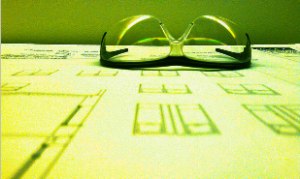
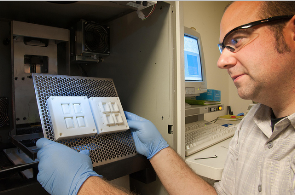
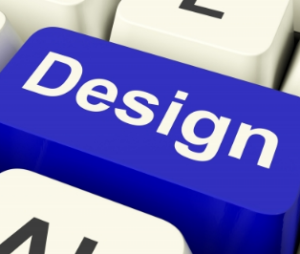
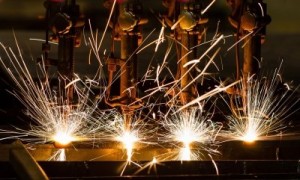
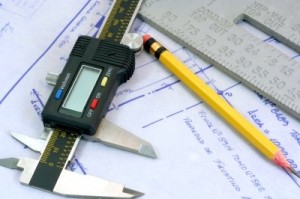
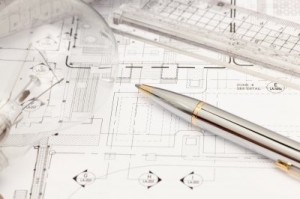

 Call Us Now!
Call Us Now!